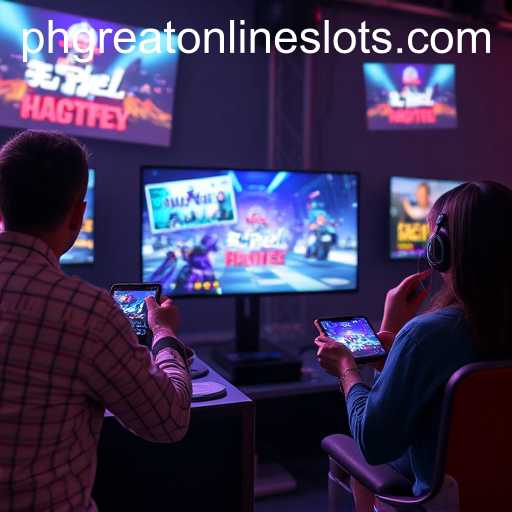The Evolution of Live Games in the Digital Era
The world of digital entertainment has undergone a seismic shift with the advent of live games, an innovation that blends traditional gaming and real-time interaction. Platforms like phgreat have revolutionized how players and audiences engage with interactive entertainment, setting a new standard for immersive experiences.
Understanding Live Games
Live games are a genre of gaming that integrate live streaming and interactive elements, allowing players to engage with content in real-time. Unlike traditional video games, which have predetermined narratives and outcomes, live games offer dynamic scenarios that change based on player interaction and decisions. This creates a unique and enthralling experience where participants can directly influence the storyline and gameplay.
Historical Context
The concept of live gaming has roots in earlier interactive TV shows and reality-based entertainment formats. However, the rapid advancement in technology has transformed what was once a niche concept into a mainstream phenomenon. Platforms such as phgreat have emerged as leaders in this space, pioneering new ways to engage and entertain audiences.
The Role of Technology
At the heart of the live gaming explosion is the technology that supports it. High-speed internet connections, advanced streaming technologies, and powerful gaming hardware enable the seamless integration of interactive elements with live broadcasts. This infrastructure allows platforms like phgreat to offer high-quality, low-latency experiences that keep audiences engaged.
The widespread adoption of smartphones and tablets has further fueled the prevalence of live games. These devices enable users to access and participate in live games from virtually anywhere, breaking down geographical barriers and broadening the reach of interactive entertainment.
Community and Social Engagement
One of the defining features of live games is the sense of community they foster. Players and spectators can communicate and collaborate in real-time, creating a shared experience that transcends traditional gaming boundaries. Platforms like phgreat capitalize on this by integrating social media elements, allowing players to share their experiences and victories with friends and followers.
Furthermore, live games often include features like chat rooms and forums, where participants can discuss strategies, share tips, and build connections with like-minded individuals. This social component is crucial to the sustained success and popularity of live games, as it encourages continued engagement and loyalty to the platform.
Monetization and Economic Impact
The live gaming industry has seen significant economic growth, with platforms and developers exploring various monetization strategies. In-game purchases, subscriptions, and promotional content are commonplace, providing revenue streams for creators and platforms alike. Moreover, sponsorships and partnerships with brands have become a lucrative avenue for generating income.
For platforms like phgreat, the focus on creating engaging, interactive content has opened up new opportunities for monetization, including unique advertising models that integrate seamlessly with gameplay. This not only benefits the platforms but also the developers and content creators who rely on these revenue streams to continue producing innovative content.
Challenges and Potential
Despite their success, live games face several challenges, including technological limitations and content moderation. As the demand for more sophisticated and immersive experiences grows, platforms must continually invest in infrastructure and development to meet these expectations.
Additionally, the real-time nature of live games requires robust moderation tools to ensure a safe and respectful environment for all participants. Platforms like phgreat must prioritize user safety and content integrity to maintain trust and credibility among their audiences.
Looking to the future, the potential for live games seems limitless. As technology continues to evolve, the possibilities for new and innovative interactive experiences are boundless. Platforms that can adapt and innovate will likely remain at the forefront of this exciting industry.








